The music video I am analysing is called 'Welcome To The Black Parade', performed by 'My Chemical Romance' and directed by Samuel Bayer. They are an alternative rock band, and this genre of music is shown often during the music video, seeing as there are a number of performance scenes, and close-ups of the band - as there are in most rock music videos. They also give a very enthusiastic and lively performance, as do other rock bands in their videos.
The music video is a mixture of all three styles of music video. They have a lot of performance scenes, whilst also having a bit of a narrative and also a conceptual feel to the video. The music video is mostly based around the lead vocalist's (Gerard Way's) belief that when somebody dies, Death comes to them in the form of their fondest memory - which in this case would be The Black Parade.
The entire video is filmed in mostly black and white, or an almost washed-out sort of colouring to it. The only colour during the video are the red roses that surround the parade's float, making it stand out from everything else and seem important during the music video - almost like the little girl in the red coat does during Schindler's List. It gives the entire video an almost 1920s, German expressionism, or perhaps old horror film. The emotions within the music video are expressed without any need for speech or sound effects, and we can easily understand the ideas behind it with just the clips and the song.
It starts with the The Patient in a hospital room, going through the progression from life to death and surrounded by nurses who are trying to comfort him in an unsuccessful way.
'When I was a young boy,
My father took me into the city,
To see a marching band...'
The 'flashbacks' seemed to be greyed out, and slightly blurry, although you are still able to tell that it's a city with possibly a parade or some kind of celebration with the balloons in view.
There are also a few shots of a television screen in front of The Patient's bed, displaying images of the lead vocalist singing, which gives us a reference to the notion of looking, as The Patient is watching him. It almost seems to be something to calm him, however, and is a good match to the calmer, piano intro to the song as it is only him singing along to the piano.
At one stage, the clip fades completely to black before reappearing again in a flash, although this time The Patient is wearing make-up, making him seem paler with dark circles around his eyes - giving a deathly and almost skeleton like impression to tie in with the rest of the clips.
A few times the clips cut back to the idea of a parade, filled with people dressed in dark and strange clothes following the float - ontop of which are the band who appear to be leading the parade. As it cuts even further out, however, we can see the environment that this parade is in - an almost dystopian wasteland of a city, with rubble surrounding the street that they're marching down, giving the video an eerie feeling.
We are then shown some closer images of the band themselves to show that they are still a main feature of the video, using both wide shots, medium shots and extreme close ups of the different members and the instruments that they play. They are all dressed in similar clothing - a black military outfit that matches the idea of a 'Black Parade'.
Some of these shots of the band are blurred, however, much like a few of the clips within the hospital to keep it tied with the theme that perhaps none of this is real, and is in fact really Death coming to welcome The Patient in what seems to be the most comforting form to him.
As The Patient continues to struggle, he reaches out for Gerard Way (the lead vocalist), who reaches back for him, almost encouraging him to join him. This once again reminds us of Gerard's belief that Death will be in a welcoming form, that will not push you away or make you feel alone.
However, from a number of My Chemical Romance's other music videos and live performances, we also see that this seems to be a bit of a star image motif, as he often appears to be reaching out for something or someone during a lot of songs.
For example, these are clips from three other music videos:
However, the image of Gerard Way reaching to The Patient through the television screen is soon interrupted, as the television itself explodes, and the image of the nurses comforting The Patient collapses, instantly putting them in the dystopian world that The Black Parade are in. The walls seem to fall down like curtains and the nurses cower, showing that they are actually in the path of The Black Parade as they approach. As this all happens, the music picks up it's tempo and the actual instruments that the band use kick in, allowing the song to progress.
The clips of the band also speed up, showing the general idea of an enthusiastic, energetic rock band during these performance scenes and giving the image of the band and what their performances on stage would actually be like. The speed of the cuts matches the tempo of the music - whereas the cuts between different shots were slower before hand, now that the rest of the band have begun to play, they have sped up.
At one point in the song, the lyrics are:
'Sometimes I get the feeling,
She's watching over me.'
At this point, the image seems to darken around the edges, and a number of the members of the band glance upwards towards the sky and the camera, almost as if we're the one watching them through something, tying in well with the lyrics.
Although the nurses cower and eventually disappear completely, The Patient stands from the hospital bed, not seeming unnerved by The Black Parade in the slightest. In fact, he almost seems comfortable around them - instead of continuing to lay on the bed, he begins to head towards the parade, as if intrigued - or familiar with the idea, once again tying in with the idea that Death comes in a welcoming form.
Throughout the entire video, however, there are a number of clips in which the edges fade in and out, showing us that this is not life, but in fact what would be beyond it for this one particular person - The Patient.
There are a few close ups, and extreme close ups of The Patient, clearly showing the make-up used to make him look deathly and pale as he looks around at this new world that he is in.
At one stage, The Patient seems to catch a glimpse of a woman standing not too far away, dressed in a Victorian-era gown and facing away from him. He watches for a moment before glancing back to the parade, almost as if seeking permission to approach the woman. This is almost like the video is giving the idea of looking, but not sexualising it in anyway as the woman is protected from any prying eyes.
As The Patient finally turns to approach the woman, we get a few close-ups of her as she turns, seeing that her dress continues to match the outfits of the band on The Black Parade with the dark, military-style corset. As the scene continues to progress, we notice that she is wearing something on her face, but are unable to properly see what it is, once again giving us the idea that she is being protected from being seen in any sort of degrading way.
As she continues to turn, the clip cuts back to a shot of the band's drummer who seems to be watching the scene intently as he plays the drums, almost as if wanting to know what will happen, and who this woman really is.
When The Patient finally gets a full glimpse as the woman as he circles her, who is supposed to be 'Mother War', we can see that she is wearing a gas mask on her face, tying in with the whole dystopian and post-apocalyptic landscape that they are all in.
Every now and then, the video switches back to an establishing shot of The Black Parade, reminding us of where they are, and what's around them all at the time of the scenes that are taking place, as well as including the band more often in the video - albeit at a distance.
It doesn't take long before The Patient continues walking, leaving Mother War behind, once again clearly showing us that she is not being sexualised in this video in any way or form, and The Patient has enough respect to carry on his way and not push the matter with her any further.
During one of the performance scenes in the music video, Gerard Way drops to his knees on the float and continues to sing, which also seems to be something that he does a lot during other music videos, as shown below:
About mid-way through the video, the clips cut to a couple of shots of the entire band together - although not playing. They are still in their black, military uniforms, but are sitting, as though posing for a normal photo shoot for the band.
It then almost instantly cuts back to footage of the band playing, although once again fading in the borders of the video and blurring the clips slightly, as if showing that although Death may appear in a welcoming form, it is still the end of a life, and is never perfect.
There are then some rather conceptual clips within the video, such as The Patient looking around, and seeing Mother War with two others - Fear and Regret - one of which is holding up a sign that says:
'Starved to death in a land of plenty.'
There is no real reason for this to be in the video, it seems, as there is no indication that The Patient died from any other means but natural, although this makes us think differently. It may be giving an intertextual reference to the fact that man is destroying the world, however, and that some decent people are being denied the rights to living like the rest, even though the rest of the human race has the means to support them, and allow them to keep living how they want to.
However, it may also be Regret that is holding up the sign, showing that it is possibly something he regrets from his life, and wishes he could change although now it is too late to do such a thing, and he understands what impact his decisions made on people.
We also see a shot of The Patient almost miming being trapped in a box, or a cage, and this may show us that he was denied his rights like the sign had said, and his death was the consequence of neglect from the rest of the world, when he could have been saved from this fate.
Once again, we get a conceptual scene as The Patient walks up a ruined staircase, although is unable to go anywhere through it. This gives us the thought of perhaps he expected Heaven or Hell after death - not something welcoming such as the Black Parade, or a fond memory of his childhood. It makes us wonder if things are not always as we expect them to be, and instead may be entirely different - although sometimes for the positive, and sometimes for the negative.
As the video shows more shots of the band, we get a mix of close ups and wide shots of each member of the band, although we get more clips of Gerard than any of the other members because he is singing, and this is something we expect to see in any rock-genre music video, and not just in this one.
We soon get an extreme close up of The Patient, but it then cuts to Gerard and other clips of the band/The Patient, the tempo of the song slowing down slightly and the lyrics being:
'Do or die, you'll never make me,
Because the world will never take my heart,
Go and try, you'll never break me...'
This could almost be referring to earlier on in the video, where it almost gave the impression of the world ruining people's lives by not caring for single people, who are perhaps less fortunate that richer people with a higher status. It is almost encouraging, to say that you should never give in no matter what state the world is in, and that you should always believe in your heart no matter where it takes you.
Meanwhile, this is represented in the video because, although The Patient is in a strange, unknown dystopian landscape, and in front of The Black Parade which is heading down the street, he stays strong, and doesn't try to run, nor hide. He is still wearing his patient gown from the hospital, and wearing nothing but slippers and not something like boots on his feet as he is walking through the barren world, clearly not giving in simply because he is faced with problems.
At this stage in the music video, the clips are focused a lot on the band playing, and The Patient beginning to approach the parade itself instead of exploring the destroyed landscape around them.
'We want it all, we wanna play this part,
I won't explain, or say I'm sorry...'
The majority of the people that are following behind The Black Parade are dressed in strange outfits that you would never see people wearing on an everyday basis, but the lyrics seem to show that that doesn't matter, and it's what they want to be seen as during the parade and so that's what they are wearing. They don't have to apologise for it or explain their motifs because that's simply what they want to wear, and people shouldn't have a problem with it.
'I'm unashamed, I'm gonna show my scar...'
At this point in the music video, Gerard drags a finger down his face, as he has done before in a number of different music videos. This is yet another clear star-image motif, and is something that he is known for doing quite often at different points.
Give a cheer for all the broken,
Listen here, because it's who we are...'
At this stage in the music video, the lyrics are incredibly inspiring, and almost saying that it's okay to be different, or messed up in some way or form as that's who you are and no one should be able to change that. The video once again shows The Patient approaching some of the followers behind the parade, who once again are wearing odd outfits which range from things that almost look like clowns, to normal-looking people who are simply wearing masks to hide their face, as if they are all one at that point in time.
'I'm just a man, I'm not a hero,
Just a boy, who had to sing this song,
I'm just a man, I'm not a hero...'
As these lyrics are being sung, The Patient is standing in front of the band and the float and besides Fear and Regret, as Gerard puts a medal around his neck, tying into the whole idea that he isn't a hero - he's just leading the song and the parade, but The Patient is for being brave and facing the prospect of death with help from them.
At one stage, Mother War, from earlier reappears for a few moments, passing The Patient before disappearing once again, making her seem mysterious and almost as if she may have just congratulated The Patient in some way or form.
As the tempo of the song picks up once again, the band begin performing - but this time a lot more energetic and lively than they had been doing during the rest of the video. It's here we begin to see some of the things we expect from a rock band - a little bit of violence as Gerard smashes his microphone stand, and Frank spinning his guitar around quite dangerously as he is playing.
However, this is quite normal for the band, as their songs are lively enough to be able to feel connected to in this sort of way, and they feel as though they should put energy into their performances instead of standing around on stage dully. This gives the audience yet another impression of what the band would be like to see live.
As the song draws to a close, the parade seems to retreat slightly away from The Patient - it getting slightly further away from him with each shot whilst continuing with the lyrics:
'(We'll carry on...)
Do or die, you'll never make me,
(We'll carry on...)
Because the world will never take my heart...'
It's almost as if although the parade is now leaving The Patient to fend for himself in the dystopian world. As Fear and Regret kiss him goodbye, he no longer feels afraid to face Death by himself, and he is able to carry on his way and leave the living world behind him.
The Patient glances down at the medal he has been given for a moment before glancing back towards the leaving parade, though doesn't follow after them, once again giving us the impression that he has overcome his fear with their help, and has been encouraged enough to carry on.
As the song fades away into a drum rhythm that sounds almost like something you would hear in an actual parade, the band stop playing, and we get a few different shots of each of them standing still before cutting to a wide shot of the entire float, almost as if they have accomplished their task.
The clips once again begin to fade in and out like they were doing so at the beginning of the music video, but now it no longer feels as though it's because of a struggle, and feels somewhat welcoming.
The final shot we get during the music video is of The Patient, alone and wandering into the barren world without any signs of fear, as if he now knows what to do and what to expect, once again giving us Gerard Way's belief that Death will come in a welcoming way to each individual person, and after they are understanding of what is happening, they can carry on.
Overall, we can see that although this is a dark music video which ties in with the topic of death and dying quite a lot, it is also inspiring in certain ways, especially with the lyrics. It uses washed out colours, make-up, outfits and a dystopian landscape to give us this impression. The use of effects in the video such as fades and flashes only adds to the themes shown in the video, although it is difficult to place it in only one of the three music video categories, and so I feel as though it partially belongs in all three in different ways. The video shows a slight narrative, as well as performance scenes and also clips that make people think, and come up with their own ideas for what it means. Frequently the lyrics tie into the concept of death, and the music also matches the speed and cuts of the clips within the video, not to mention us seeing some examples of the stereotypical rock band performances.
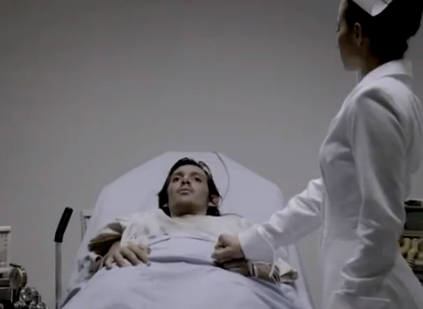
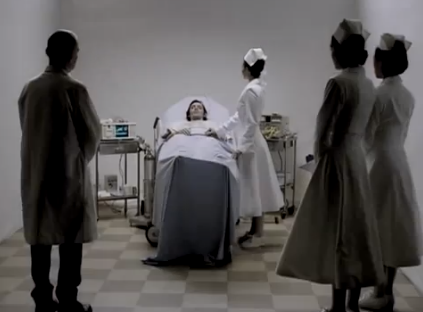
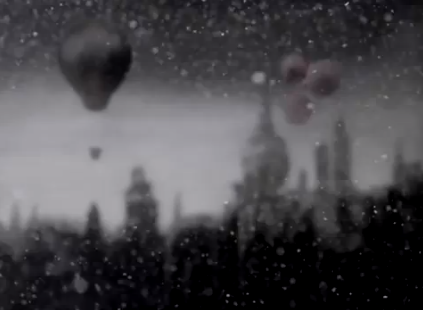

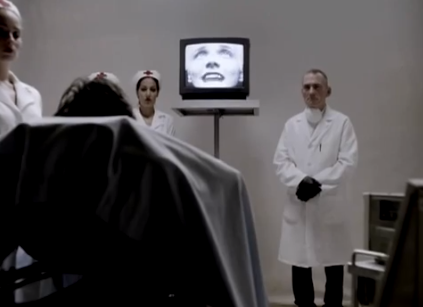
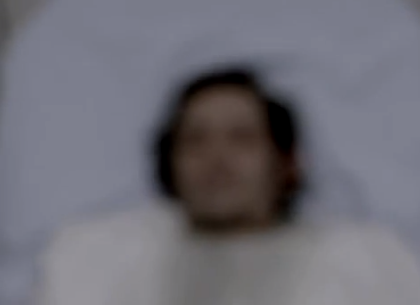


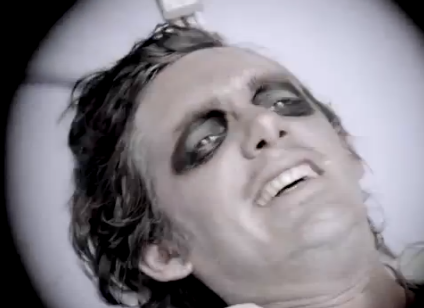
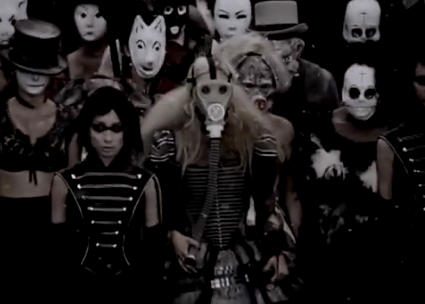
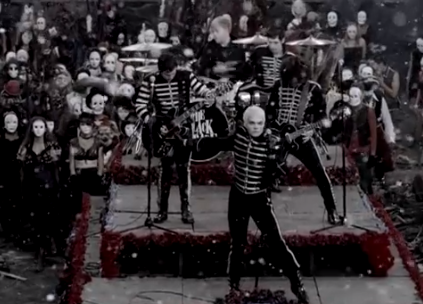



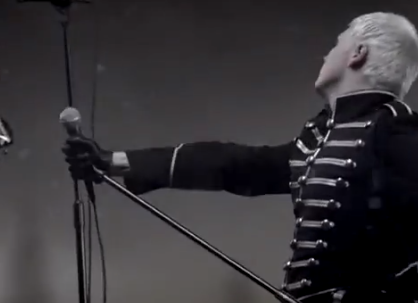
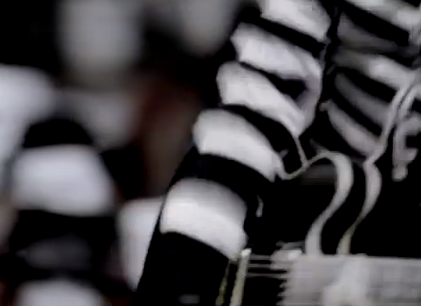
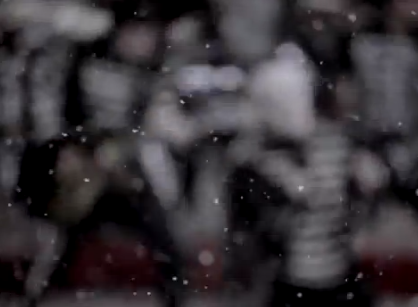
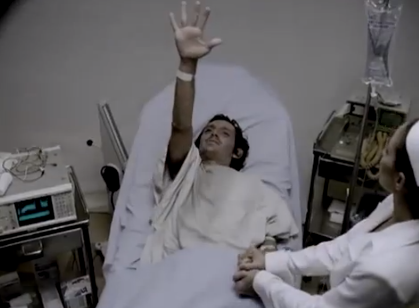

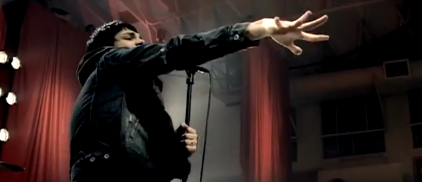
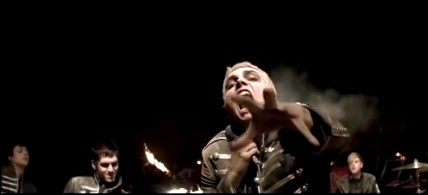
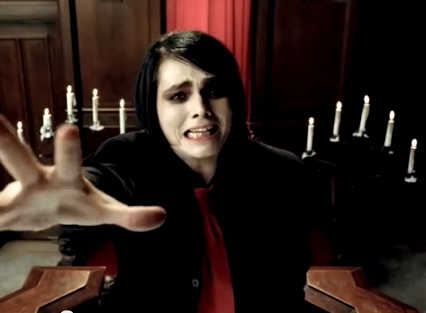
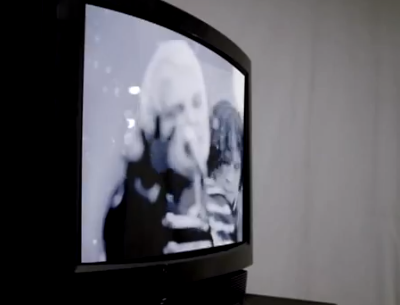

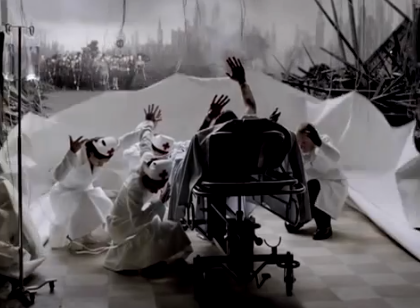

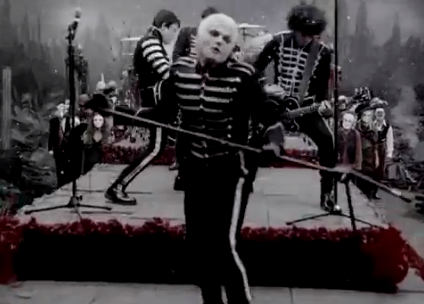
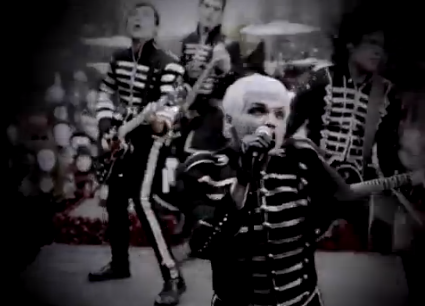

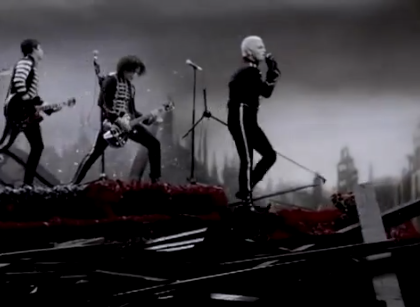
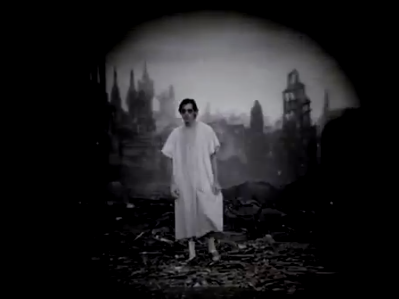

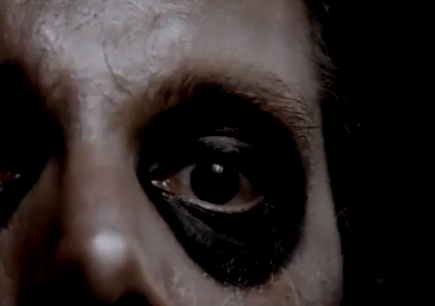
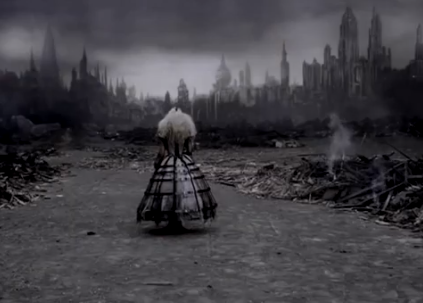

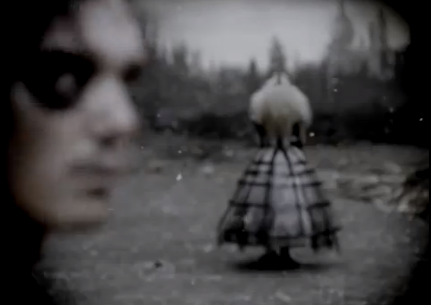
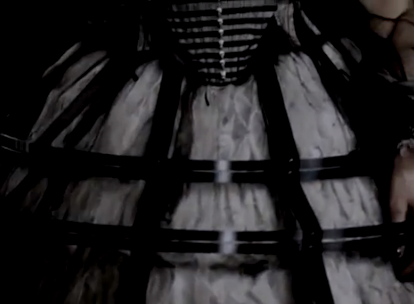

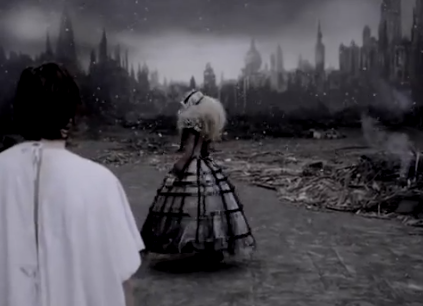
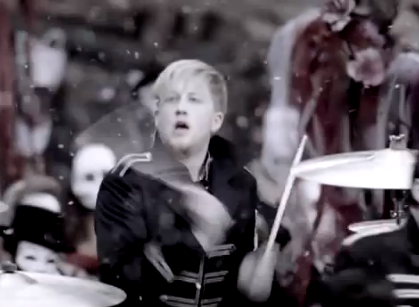
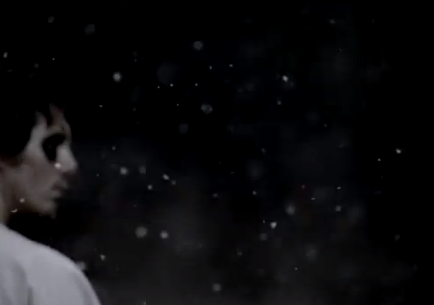
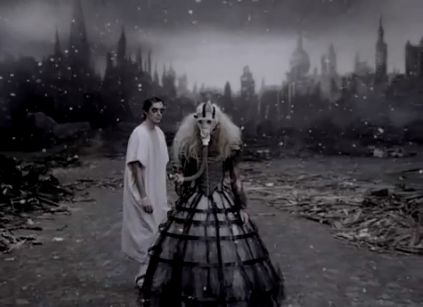
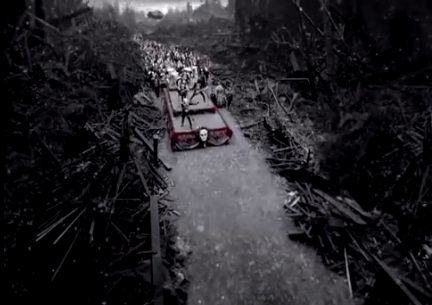

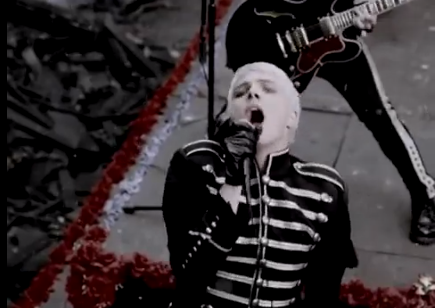
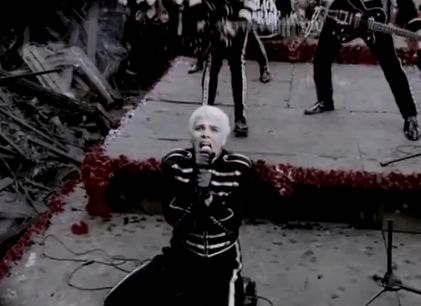
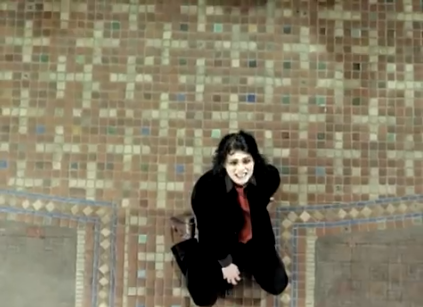

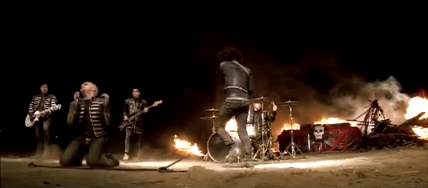
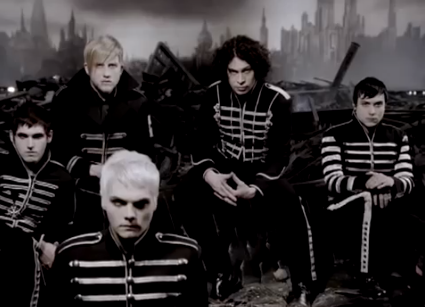

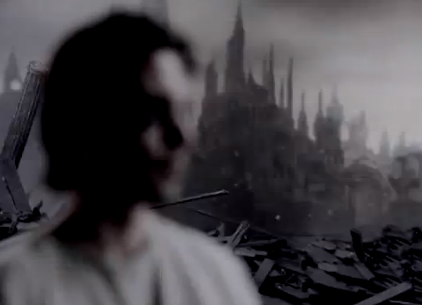
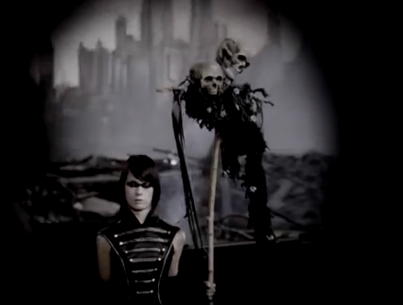
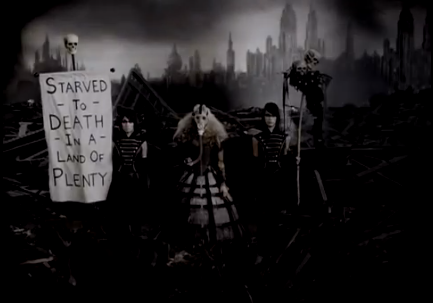
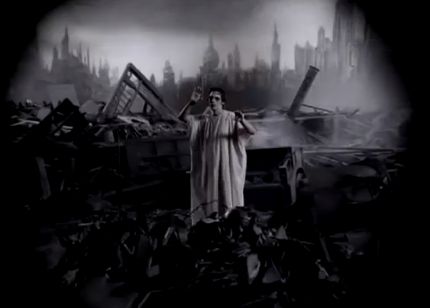
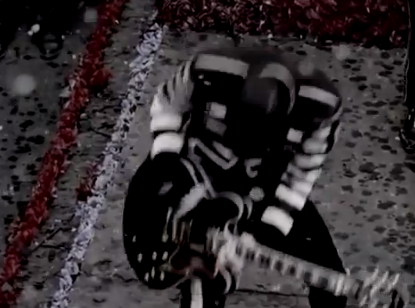
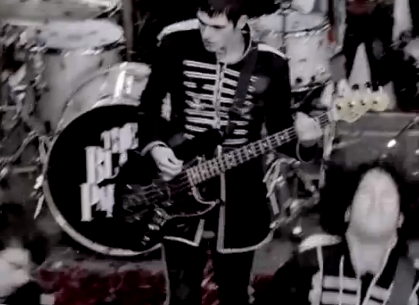
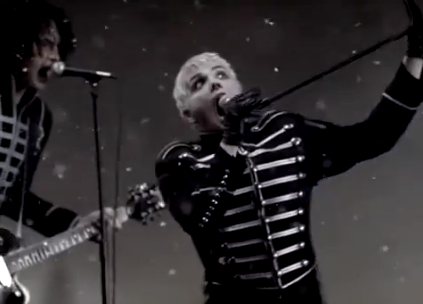
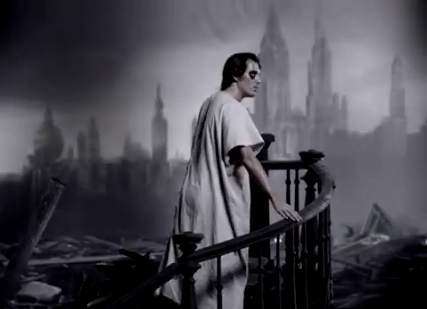
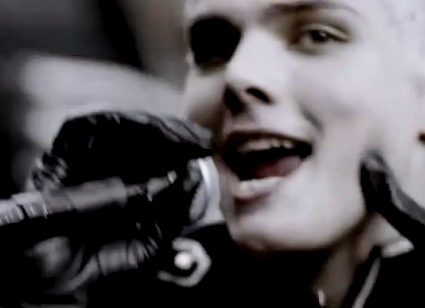
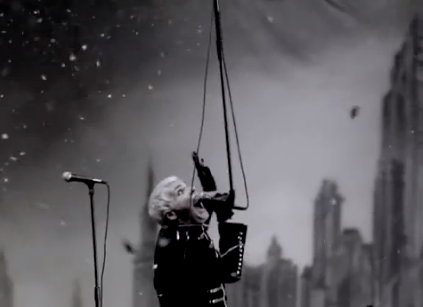
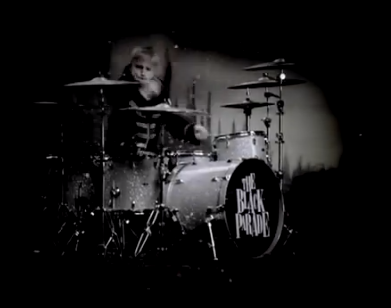
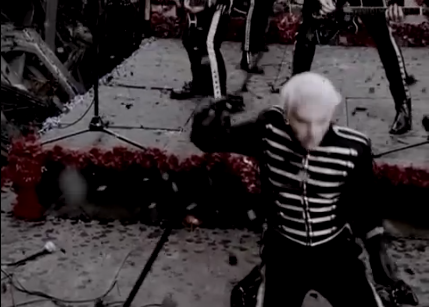
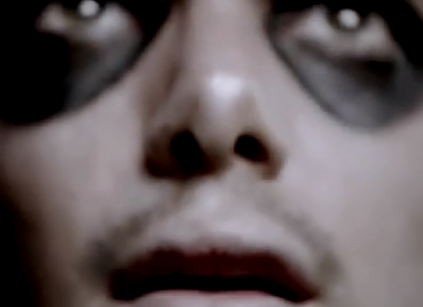
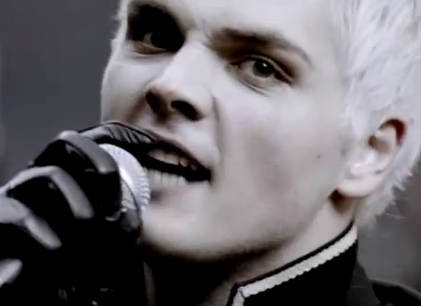
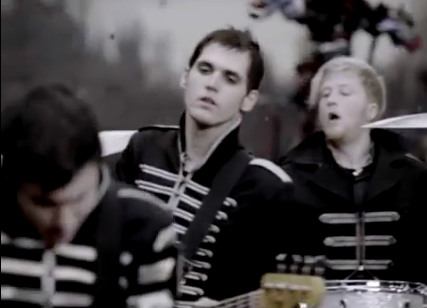
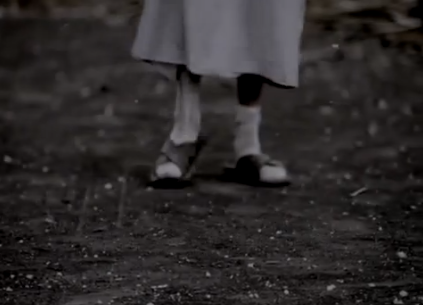
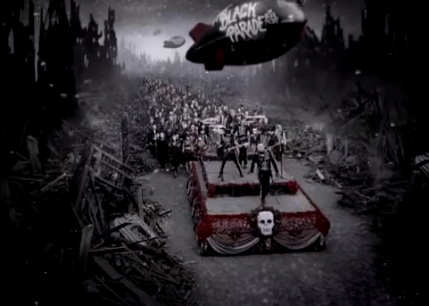

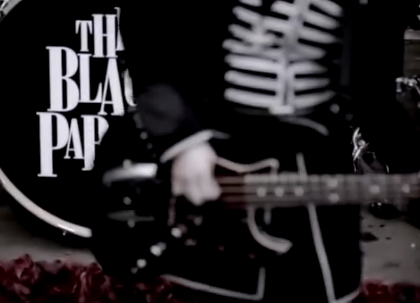
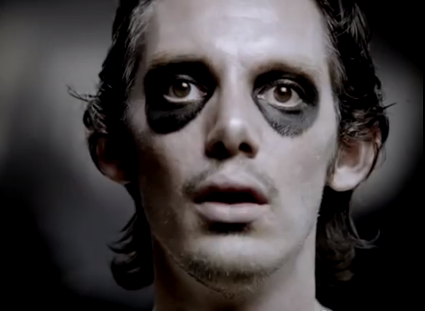

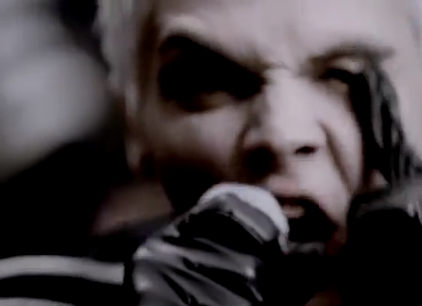
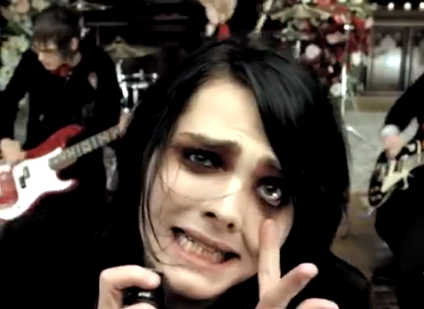
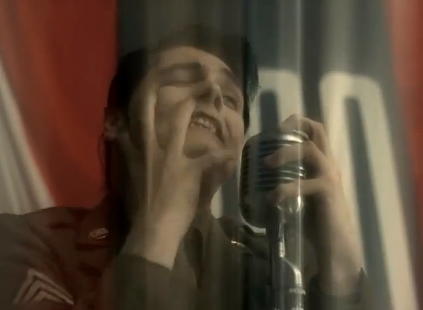
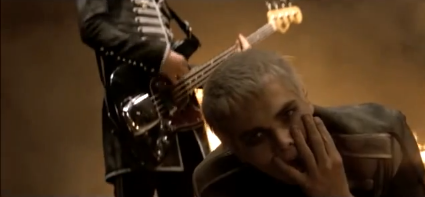
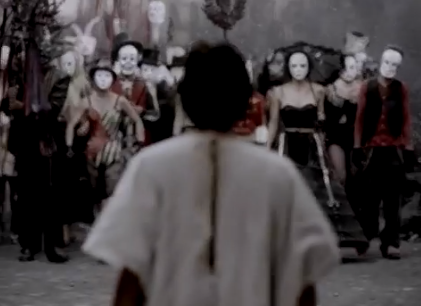
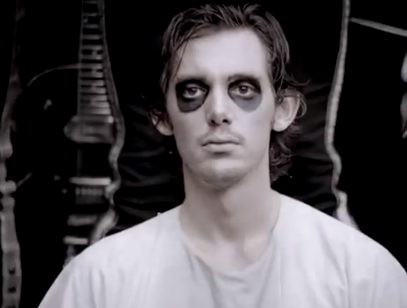
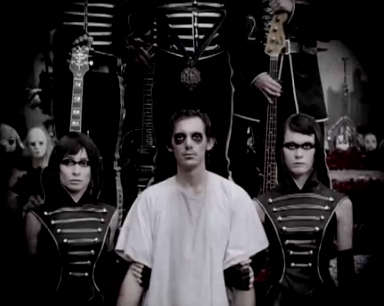
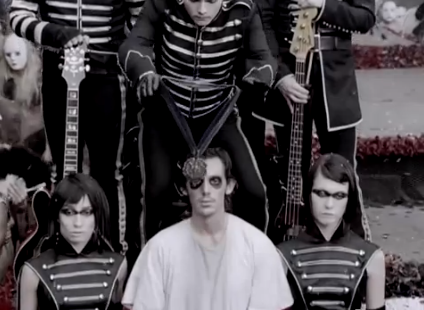
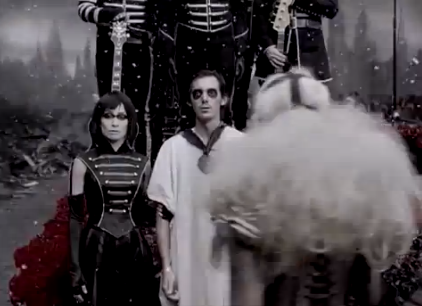
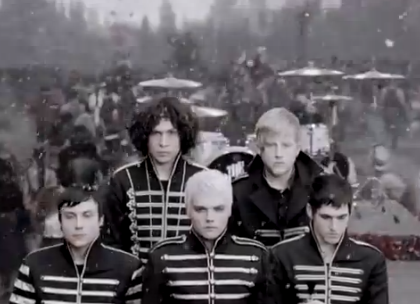
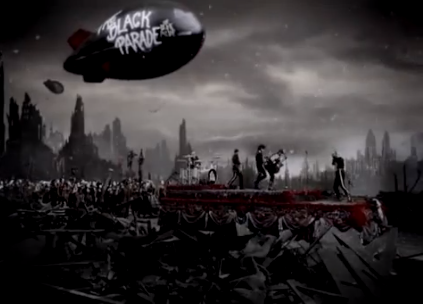
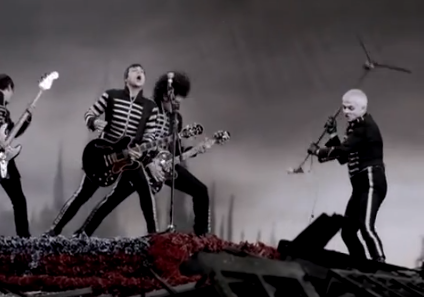
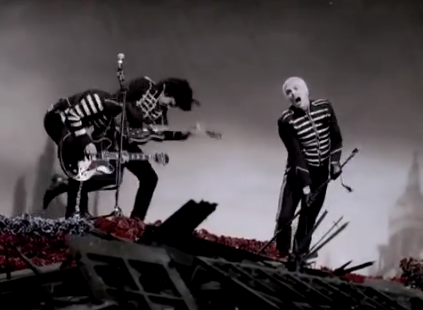
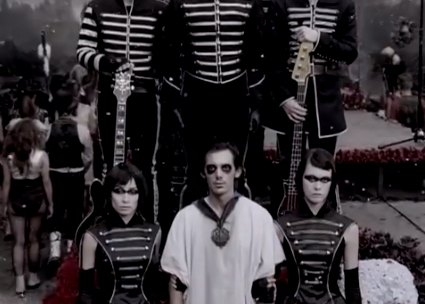


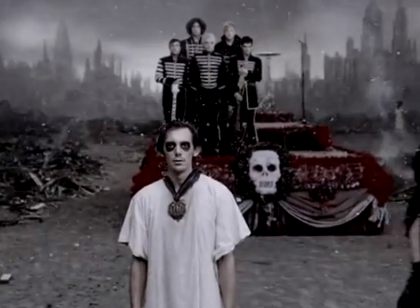
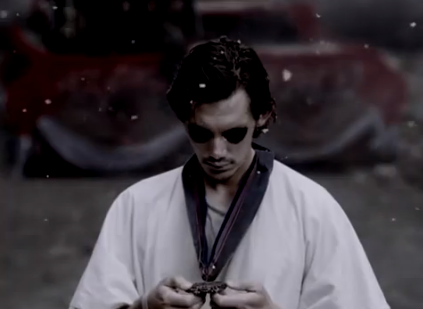
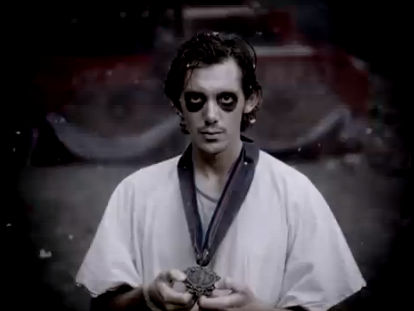
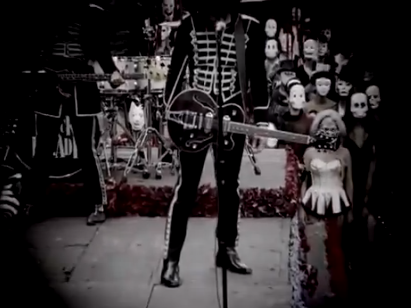
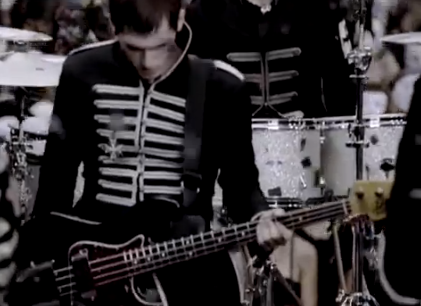
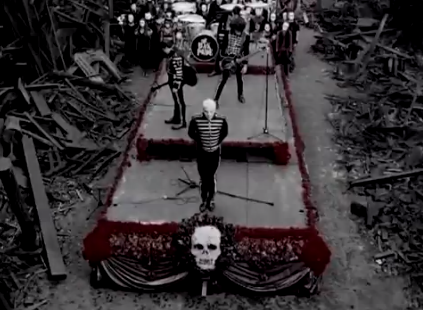
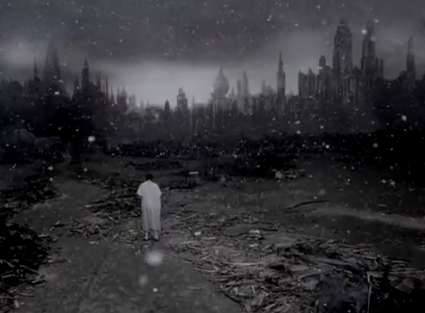
No comments:
Post a Comment